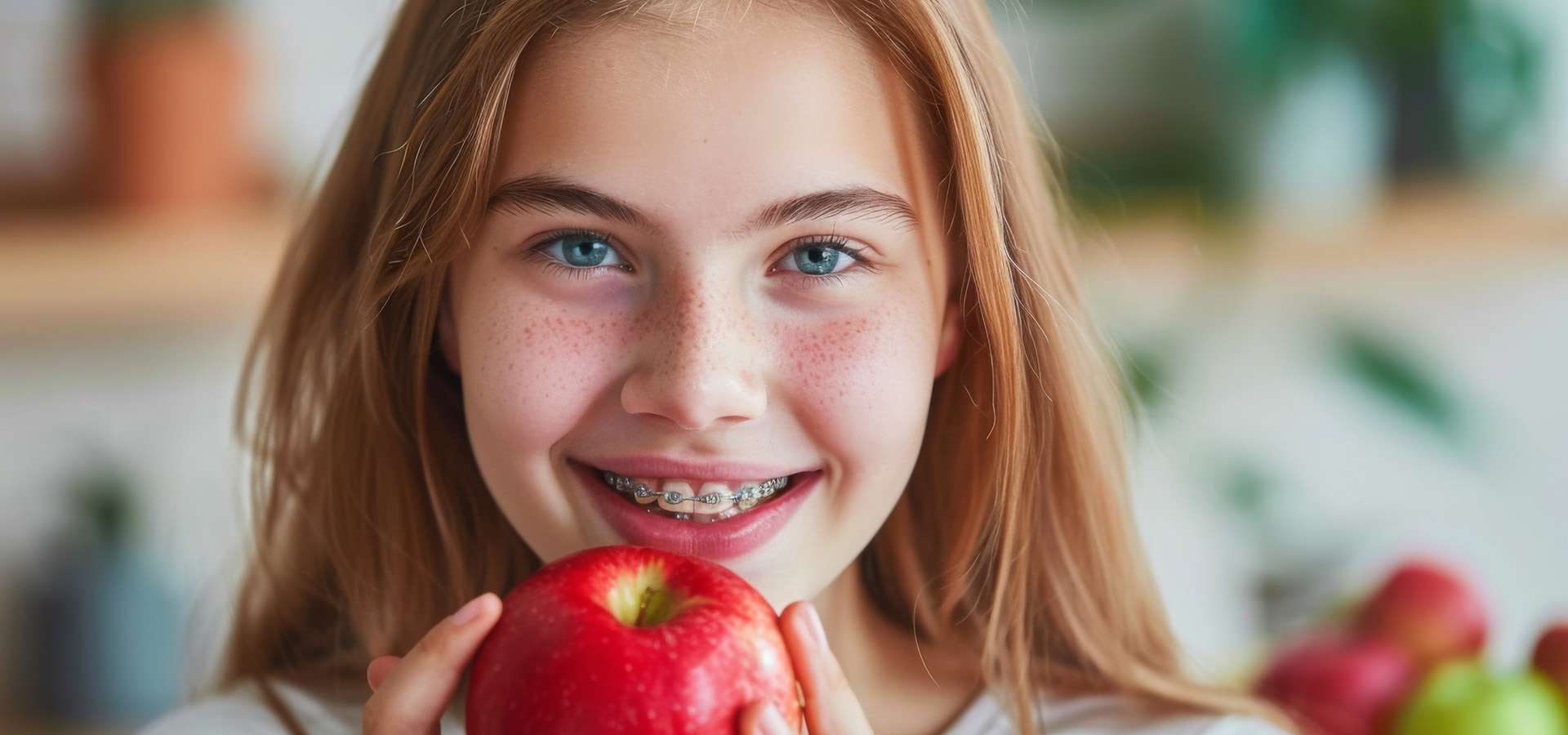So, you just got braces. Congrats! You’re officially on your way to a straighter, healthier smile. But now comes one of the biggest questions everyone has in the beginning: “What can I eat with braces?” That’s a completely normal concern. Your teeth and mouth are probably feeling a little sore, and your eating habits are going to look a bit different, especially for the first few days. But the good news is, there are still tons of delicious foods you can eat while wearing braces—you just have to know which ones are safe and which ones you should avoid.
In this guide, we’re breaking it all down in everyday language. Whether you’re new to braces or just looking for a refresher, let’s talk about how to keep your teeth, your braces, and your taste buds happy at the same time.
What Can I Eat with Braces? A Comprehensive Guide
Right after getting your braces on, your teeth and gums are going to feel pretty sensitive. That’s totally normal. Your mouth is adjusting to the new pressure, and chewing can be a little uncomfortable at first. During this adjustment period, soft foods are your best friend. Things like mashed potatoes, yogurt, smoothies, scrambled eggs, and soup can help you get the nutrients you need without making your teeth hurt more.
Even after the soreness fades, you’ll still need to be a little more careful about what you eat. Braces can be delicate. Certain foods—especially hard, sticky, or crunchy ones—can bend wires, break brackets, or get stuck in places that are tough to clean. That’s why understanding which foods are safe and which ones you shouldn’t eat while wearing braces is so important.
Understanding Your Food Choices with Braces
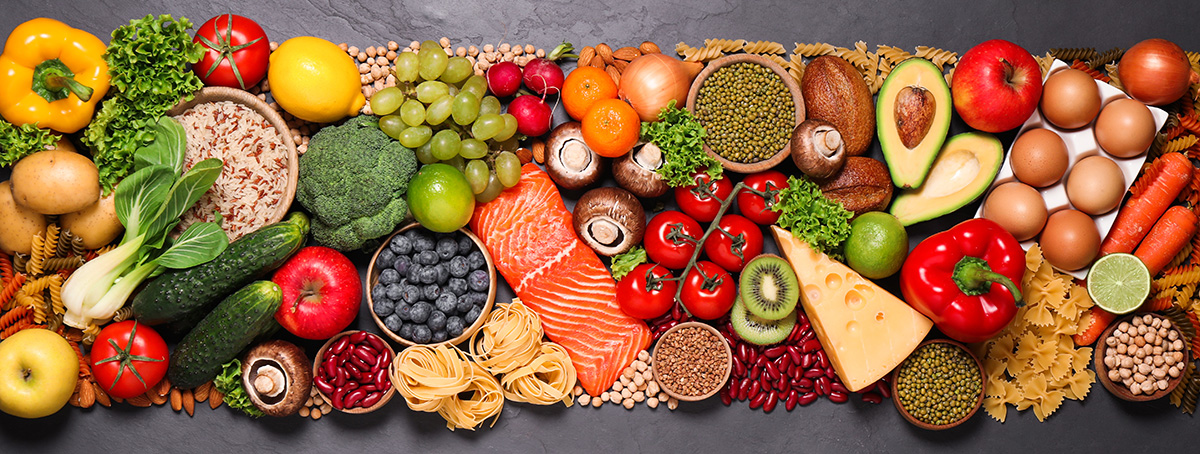
When it comes to food and braces, it’s really about balance. You don’t have to give up everything you love. But you do have to get a little creative with how you enjoy your meals. A lot of your favorite foods can still be on the menu, just with a few tweaks.
For example, soft fruits like bananas, berries, and peaches are all great choices. If you love apples, you don’t have to give them up—you just need to cut them into small slices instead of biting straight into them. Same goes for veggies. Raw carrots might be off-limits, but cooked carrots, steamed broccoli, and roasted squash are all soft enough to eat safely with braces.
The same rule applies to bread and grains. Skip the super crusty bread or hard baguettes, and go for softer options like pancakes, muffins (without nuts), and pasta. For breakfast, you might find that oatmeal, soft scrambled eggs, and yogurt bowls work best. Lunch and dinner are a breeze once you get used to what’s safe. Soft-cooked meats, casseroles, rice bowls, and grilled fish are all fair game.
Your First Few Days with Braces: Embracing Soft Foods
Those first few days after getting braces on are usually the toughest when it comes to eating. Your teeth may be sore, and chewing anything harder than a soft noodle might feel impossible. This is when soft foods become a real lifesaver.
Mashed potatoes, smoothies, pudding, and soup are all go-to options. Ice cream can also help with the soreness—plus, let’s be honest, it’s a great excuse to enjoy a sweet treat. Just make sure to choose soft, smooth varieties without nuts, candy, or crunchy mix-ins. Think chocolate or vanilla soft-serve, not rocky road.
As your mouth gets used to the braces, you’ll start to feel more confident with chewing. That’s when you can begin adding more foods back in—as long as you’re still avoiding the ones that can damage your brackets or wires.
Foods to Approach with Caution Initially
It’s tempting to go back to your regular meals once the soreness wears off, but it’s still a good idea to take it slow. Foods that are chewy or mildly crunchy might seem harmless, but they can be risky. Pizza crusts, granola bars, tough bagels, and hard taco shells should be eaten with caution or avoided altogether, especially early in your treatment.
Even something as simple as a sandwich can cause problems if the bread is too thick or the meat is too tough to bite through comfortably. Stick with thinly sliced deli meats and softer breads to make things easier. The same goes for wraps and tortillas—choose soft ones that don’t require too much effort to chew.
Foods to Avoid with Braces
Now, let’s talk about what you shouldn’t eat while wearing braces. This list might seem a little long at first, but once you understand why these foods can cause trouble, it all makes sense.
Sticky foods like caramel, taffy, and chewing gum are big no-gos. They can get wrapped around your brackets and pull them out of place. Hard candies, popcorn, nuts, and crunchy chips are also off-limits because they can break wires or cause your brackets to pop off.
You should also skip really tough meats like steak or beef jerky. Not only are they hard to chew, but they can put unnecessary pressure on your braces. If you’re craving meat, go for something tender like chicken, turkey, or flaky fish instead.
Even some healthy foods need to be avoided or modified. Raw veggies like carrots or celery should be cooked until they’re soft. Whole apples or pears should be sliced thin. And corn on the cob? Definitely not a great idea. Cut the kernels off and eat them with a fork instead.
What About Sweets Like Chocolate and Ice Cream?
Sweets are okay in moderation, but you’ll want to be selective. Chocolate is fine—as long as it’s soft and doesn’t contain nuts, caramel, or toffee. Milk chocolate bars, peanut butter cups (without chunks), and plain M&Ms are usually safe if eaten carefully. Dark chocolate melts easily and can also be a good option.
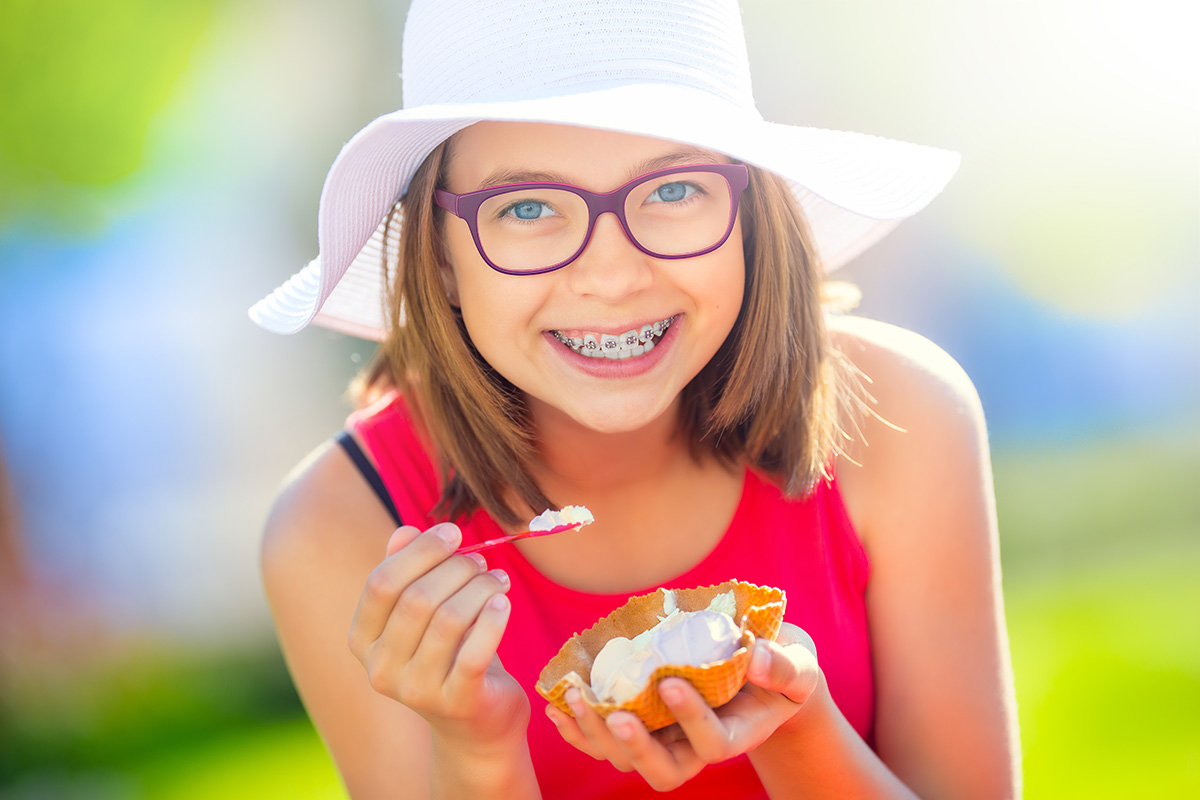
Ice cream is another popular question, and yes, you can eat it with braces. In fact, it can help reduce inflammation when your teeth are sore. Just be sure to skip the hard add-ins like chocolate chips, cookie chunks, or nuts. Go for smooth flavors like vanilla, strawberry, or mint chocolate chip—just make sure those chips are small and soft.
And remember, even if a sweet food is braces-safe, sugar is still sugar. It can lead to plaque buildup, especially around your brackets, so always brush and floss after enjoying a treat.
How Long After Getting Braces Can You Eat Normal Foods?
Most people can start eating more regular meals after about a week or two, depending on how sensitive their teeth feel. But even then, “normal” might look a little different. You’ll still need to avoid crunchy foods, sticky stuff, and anything that’s tough to chew.
Over time, you’ll get really good at knowing which foods work and which ones don’t. Your mouth will also get stronger and more used to the braces, so eating becomes less of a challenge. But even after that adjustment period, some foods will stay on the avoid list until your braces come off.
What to Keep Avoiding While You Have Braces
Even after you’re used to your braces, there are certain foods you’ll need to continue avoiding until treatment is over. Anything that’s hard, crunchy, sticky, or tough should stay off the menu.
This means no popcorn, no nuts, no chewy candy, and no hard chips. Crusty bread, hard rolls, and even certain types of pizza can also be risky. These foods can all damage your braces or make cleaning your teeth a real challenge.
The longer you stay committed to these guidelines, the smoother your treatment will go—and the fewer emergency visits you’ll have to make to fix broken brackets.
Other Factors for Keeping Your Teeth and Braces Healthy
Food isn’t the only part of the equation. Keeping your teeth clean while wearing braces is a huge part of making sure your smile turns out the way it should. Food gets stuck more easily with braces, and plaque can build up around the brackets and wires if you’re not brushing and flossing the right way.
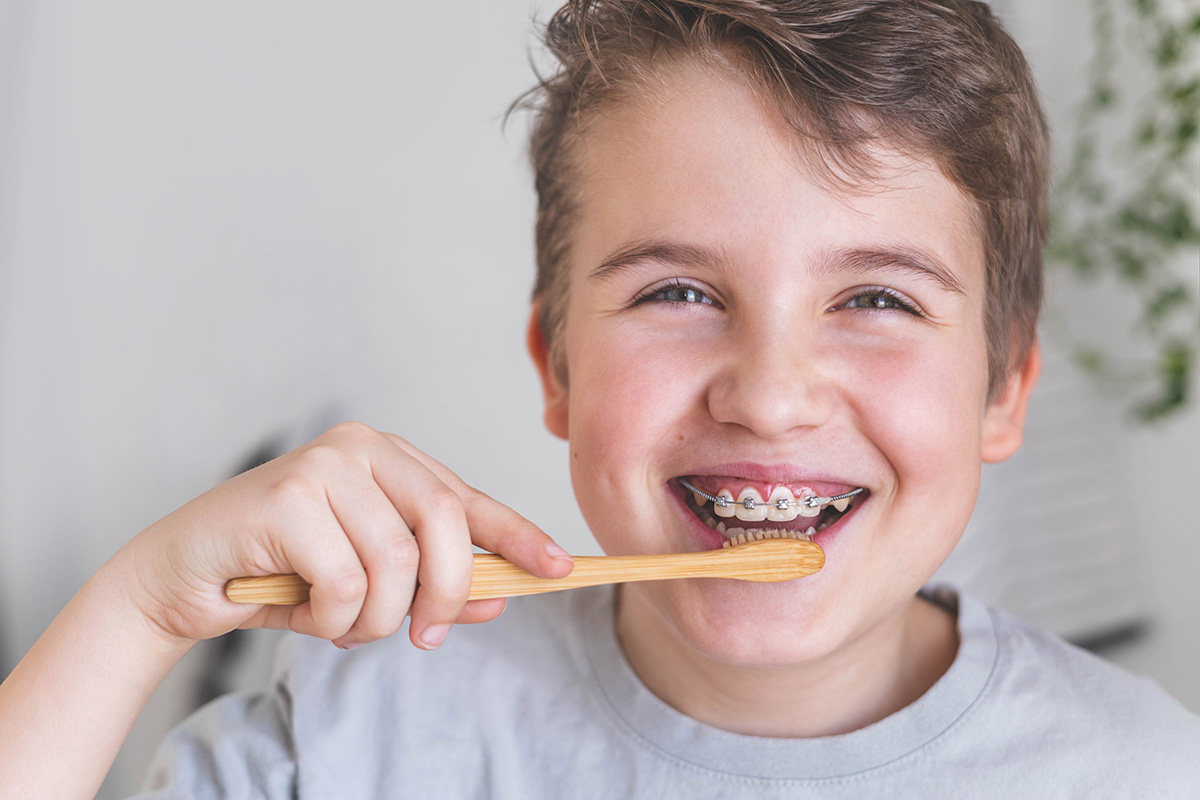
Try to brush after every meal, or at least rinse your mouth with water if you’re not near a toothbrush. Flossing takes more time with braces, but it’s still super important. Your orthodontist might recommend tools like floss threaders or water flossers to help you get the job done more easily.
It’s also a good idea to keep up with your regular dental checkups during treatment. Your dentist and orthodontist will work together to make sure everything is healthy and moving the way it should.
Foods You Can Enjoy With Braces
Let’s end on a high note—there are plenty of foods you can still enjoy while wearing braces. Pasta dishes, soft breads, ripe fruits, cooked vegetables, yogurt, smoothies, scrambled eggs, rice, pancakes, mac and cheese, and soft-cooked meats are all great choices.
You don’t have to feel like you’re stuck eating boring meals. Once you get the hang of what works, you’ll find that there are tons of braces-friendly recipes and meals out there. It might take a little more planning at first, but eating with braces doesn’t have to be hard—or tasteless.
Ready to learn more about caring for your braces and finding a treatment plan that works for you? Our team specializes in orthodontics in Fort Lauderdale and is here to guide you every step of the way. Whether you’re just getting started or looking for tips to make life with braces easier, we’ve got your back. Book a consultation today and let’s get you one step closer to your best smile.
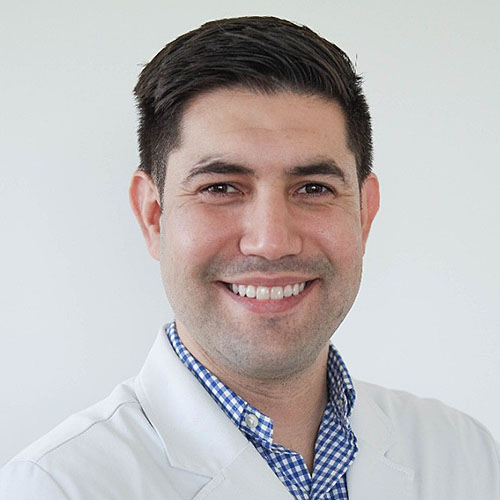
Dr. Ovy Quintanal is a South Florida orthodontist and the founder of Oceanside Orthodontics in Fort Lauderdale, FL.

